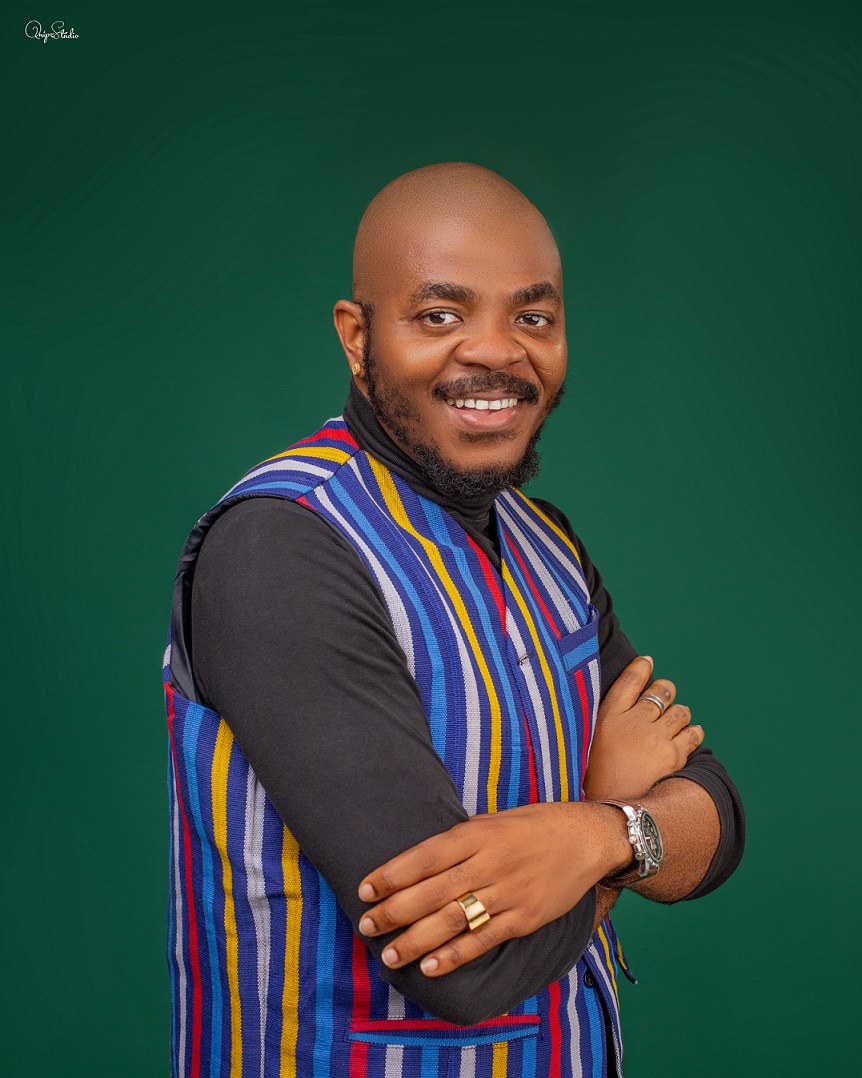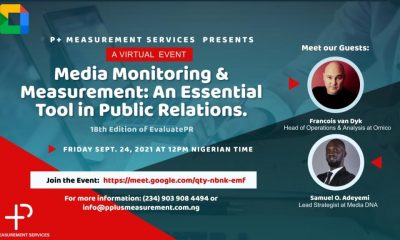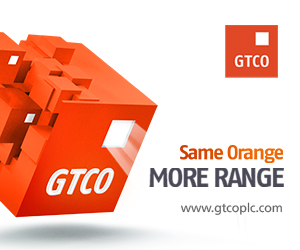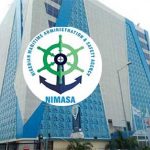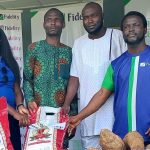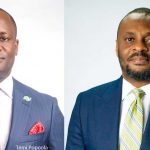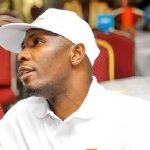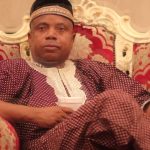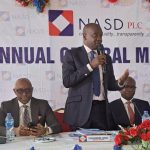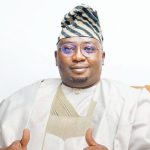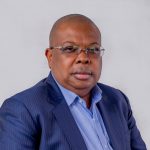Feature/OPED
The Conflict of Interest No One Talks About: PR Agencies as Their Own Judges

By Philip Odiakose
Public relations is an essential element of corporate strategy, enabling organizations to build and maintain a positive image, communicate effectively with stakeholders, and navigate crises. PR agencies play a critical role in helping brands amplify their stories and enhance public perception. However, an increasingly concerning trend is the practice of PR agencies evaluating their work. While on the surface this may appear convenient and cost-effective for clients, it is a practice fraught with potential bias and subjectivity, ultimately undermining the integrity of performance evaluation.
The core function of any PR effort is to establish credibility and trust with audiences, stakeholders, and the public. These agencies are well-equipped to handle strategic communications and media relations, but when it comes to assessing their own performance, objectivity becomes a major concern. Agencies are naturally inclined to showcase their successes and minimize their shortcomings. This conflict of interest can result in overly optimistic reports that may not accurately reflect the true impact of a PR campaign, leading to misguided decisions by clients.
One of the fundamental principles of PR measurement, as emphasized by the International Association for the Measurement and Evaluation of Communication (AMEC), is the need for transparency and independence. For any organization to fully understand the effectiveness of its media outreach, third-party evaluation is essential. This is particularly true in industries where reputation management is critical to long-term success. When PR agencies judge their work, it is difficult to escape the influence of self-preservation, and reports may end up highlighting metrics that paint a favourable picture while neglecting areas where improvement is needed.
The Importance of Objective PR Measurement
To ensure a fair and accurate evaluation of PR performance, brands must engage independent PR measurement agencies. These firms bring an external, unbiased perspective, using data-driven methodologies to assess media coverage, sentiment, and performance. Independent firms have no stake in the outcome of the campaigns they evaluate, allowing them to provide clients with an honest, unfiltered analysis. This objectivity is key to identifying blind spots and improving future strategies.
Moreover, objective PR measurement helps brands make better-informed decisions about where to allocate resources. By relying on impartial data, companies can adjust their messaging, target the right audiences, and invest in campaigns that truly resonate with stakeholders. This ensures that PR strategies are rooted in reality rather than wishful thinking.
Case Study: A Leading Nigerian Commercial Bank
A prime example of the risks associated with PR agencies evaluating their work can be found in the case of a leading commercial bank in Nigeria. The bank, one of the top financial institutions in the country, had been working with a reputable PR agency to manage its media relations and corporate communications. The agency was responsible for promoting the bank’s image, particularly during a period of expansion and the launch of several new digital banking services.
After several months of media outreach and PR campaigns, the agency delivered its performance report to the bank’s senior management. According to the report, the bank had achieved extensive media coverage in major publications, with overwhelmingly positive sentiment from the public. The agency cited the number of press mentions, the reach of articles, and the favourable tone of coverage as evidence of the campaign’s success. However, the bank’s executives began to notice a disconnect between the glowing report and the actual feedback they were receiving from customers and stakeholders on the ground.
Feeling that the report might not provide the full picture, the bank decided to engage an independent PR measurement consultancy to conduct a thorough audit of its media performance. The results were eye-opening. While the agency had indeed secured media coverage, the independent analysis revealed that a significant portion of the coverage was neutral or lacked engagement from the bank’s target audience. Furthermore, the sentiment analysis showed that, contrary to the agency’s report, there had been a notable increase in negative feedback on online media platforms regarding the bank’s customer service and digital banking experience.
The independent consultancy’s report provided a more nuanced understanding of the bank’s media presence, highlighting areas where the messaging had failed to connect with key stakeholders. This prompted the bank to reassess its PR strategy, leading to targeted improvements in communication with customers and a more focused approach to media outreach. Had the bank solely relied on the agency’s self-evaluation, it may have continued with a misguided perception of its public image.
Why Independence Matters
This case underscores the importance of objective, third-party evaluation in PR. By relying on independent PR measurement firms, organizations can access an impartial assessment that is grounded in data and free from the bias that naturally arises when agencies judge their work. Independence in PR measurement ensures that both successes and shortcomings are identified, allowing brands to improve continuously.
In contrast, when PR agencies are tasked with evaluating their campaigns, they may be tempted to overstate the impact of their efforts or focus on vanity metrics that look impressive but provide little value in terms of actionable insights. Metrics such as the number of media mentions or the reach of articles can be misleading if not contextualized with a deeper analysis of audience engagement, sentiment, and the alignment of coverage with the brand’s objectives.
Moving Towards Transparent PR Measurement
For brands looking to establish long-term credibility and trust with their audiences, independent PR measurement is not just a best practice—it is a necessity. The complexities of modern media landscapes demand sophisticated services and methodologies to accurately assess the effectiveness of PR campaigns. Independent consultancies are better positioned to provide this level of analysis, as they are not influenced by the need to justify their work to clients.
Conclusion
In an industry where reputation is everything, PR agencies and their clients need to embrace objectivity and transparency in performance evaluation. While PR agencies excel at crafting narratives and engaging with the media, their role should not extend to measuring the success of their work. Doing so invites bias and can lead to flawed assessments that undermine the effectiveness of future campaigns.
For brands seeking to maximize the impact of their PR efforts, the solution is clear: engage independent PR measurement firms. These firms provide the objective, data-driven insights that are necessary for understanding media performance and making informed decisions about future strategies. By prioritizing independent evaluation, organizations can ensure that their PR campaigns are not only successful in the short term but also aligned with long-term goals for growth and reputation management.
Philip Odiakose is a leader and advocate of Media Monitoring, PR measurement and evaluation in Nigeria. He is also the Chief Media Analyst at P+ Measurement Services, a member of AMEC, NIPR and AMCRON
Feature/OPED
Taxation Without Representation

By Dr Austin Orette
The grandiosity of Nigerians when they discuss events and situations can be very funny. If the leaders use this kind of creativity in proffering solutions, we may be able to solve some of the problems that plague Nigeria perennially.
There seems to be a sublime affectation for new lingos when the system is being set to punish Nigerians. It is a kind of Orwellian speak.
Recently, there was no electricity throughout the country. The usual culprit and government spoke; people came out to tell us the power failure was due to the collapse of the National grid. Does it really matter what is collapsing? This is just an attempt by some government bureaucrats to sound intelligent.
Intelligence is becoming a borrowed commodity from the IMF or World Bank. What does it mean when you tell Nigerians that the national grid collapsed? Is that supposed to be a reassurance, or it is said to give the assurance that they know something about the anemic electricity, and we should get used to the darkness. This is a language that is vague and beckons the consumer to stop complaining. Does that statement mean anything to Nigerians who pay bills and don’t see the electricity they paid for? If they see it, it comes with an irregular voltage that destroys their newly purchased appliances. Just tell or stay quiet like in the past.
Telling us that a grid collapse is a lie. We have no national grid. Do these people know how silly their language sounds? Nigeria produces less than 10,000 megawatts of electricity for a population of 200 million people. How do you permutate this to give constant electricity to 200 million people? It is an insult to call this low output a national grid. What is so national about using a generator to supply electricity to 200 million people? It is simple mathematics. If you calculate this to the minute, it should not surprise you that every Nigerian will receive electricity for the duration of the blink of an eye. They are paying for total darkness, and someone is telling them they have an electricity grid.
If you can call the 10,000-megawatt national grid collapsed, it means you don’t have the mind set to solve the electricity problem in Nigeria.
To put it in perspective is to understand the basic fact that the electrical output of Nigeria is pre-industrial. Without acknowledging this fact, we will never find solutions as every mediocre will come and confuse Nigeria with lingos that make them sound important.
It is very shameful for those in the know to always use grandiose language to obfuscate the real issues.
South Africa with a population of sixty million produces about 200,000 megawatts of electricity daily. Nigeria produces less than 10,000 megawatts. Why South Africa makes it easy to lift the poor from poverty, Nigeria is trying to tax the poor into poverty.
The architects of the new tax plan saw the poor as rich because they could afford a generator.
A non-existent subsidy was removed, and the price of fuel went through the roof. Now the government says they are rich. What will they get in return for this tax extraction? Why do successive Nigerian governments always think the best way to develop Nigeria is to slap the poor into poverty? What are the avenues for upward mobility when youth corps members are suddenly seen as rich taxpayers? Do these people know how difficult it is to start a business in Nigeria?
After all the rigmarole from Abuja to my village, I cannot get a government certificate without a-shake down from government bureaucrats and area boys. The government that is so unfriendly to business wants to tax my non-existing businesses. Are these people in their right state of mind? Why do they think that taxing the poor is their best revenue plan? A plan like this can only come from a group of people who have no inkling of what Nigerians are going through. People can’t eat and the government is asking them to share their meager rations with potbellied people in Abuja.
Teach the people how to fish, then you can share in their harvest. If an individual does what the government is doing to Nigerians, it will be called robbery, and the individual will be in prison. When the government taxes people, there is a reciprocal exchange. What is being done in Nigeria does not represent fair exchange.
Nigerians have never gotten anything good from their government except individual wealth that is doled out in Abuja for the selected few.
The question is, will Nigerians have a good electricity supply? NO. Will they have security of persons and properties? No. Will they have improved health care? NO. Will there be good roads? No. Will they have good schools and good education? No.
Taxation is not good governance. A policy like this should never be rushed without adequate studies. Once again, our legislators have let us down. They have never shown the people the reason they were elected and to be re-elected. They are not playing their roles as the watchdog and representatives of the people. Anyone who voted for this tax bill deserves to lose their positions as Senators and Members of the House of Representatives.
We are not in a military regime anymore. Nigerians must start learning how to exercise their franchise. This taxation issue must be litigated at the ballot box. The members of the National Assembly have shown by their assent that they don’t represent the people.
In a normal democracy, taxation without representation should never be tolerated. They must be voted out of office. We have a responsibility and duty to use our voting power to fight unjust laws. Taxation without representation is unjust. Those voted into power will never respect the citizens until the citizens learn to punish errant politicians by voting them out of office. This responsibility is sacred and must be exercised with diligence.
Dr Austin Orette writes from Houston, Texas
Feature/OPED
Why GOtv Continues to Shape Nigeria’s Home Entertainment Culture
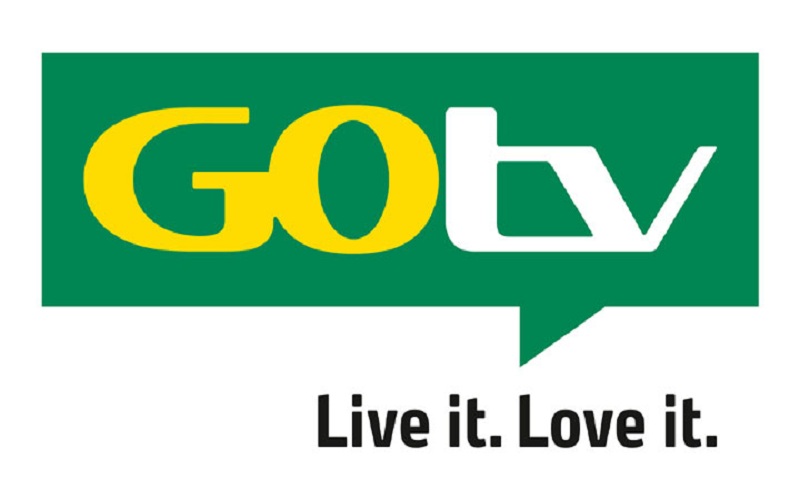
For many Nigerian families, GOtv has become more than a television service. It is part of the daily routine. It is what people unwind with after a long day, what keeps children entertained on quiet weekend mornings, and what brings households together during football matches, movie nights, and festive celebrations. Over the years, GOtv has blended naturally into these everyday moments, shaping the way Nigerians enjoy entertainment at home.
Here are some of the reasons GOtv continues to stand out.
1. Local Content That Feels Like Home
Nigerians love stories that reflect their lives, and GOtv delivers this consistently. With Africa Magic, ROK, and other local channels, viewers enjoy Nollywood movies, relatable dramas, reality shows, and lifestyle programming that speak their language. These are familiar faces, familiar stories, and familiar experiences. GOtv understands the value of cultural connection and continues to invest in the content viewers care about.
2. Affordable Packages That Work for Real Families
GOtv has built its reputation on affordability. With packages designed for different budgets, families can enjoy quality entertainment without financial pressure. Some of the affordable packages on GOtv include GOtv Jinja, GOtv Jolli, GOtv Max, GOtv Supa, GOtv Supa Plus. This balance of good content at a comfortable price is a major reason GOtv remains a trusted household name across Nigeria.
3. A Channel Lineup That Has Something for Everyone
The beauty of GOtv is its range. Children enjoy their cartoons and animated shows, parents relax with movies and telenovelas, sports lovers stay connected to live games and highlights, and music and lifestyle channels keep the energy lively. Whether it is catching up on the news, finding something light after work, or choosing a family movie for the weekend, GOtv fits naturally into everyday Nigerian life.
4. Programming That Matches Our Daily Rhythm
GOtv understands the way Nigerians watch television. Weeknights come with easy to follow entertainment, weekends offer longer movies and marathons, and festive seasons arrive with special programming that brings everyone together. The schedule is practical, familiar, and aligned with the pace of Nigerian homes.
5. Easy Access Across the Country
From major cities to smaller communities, GOtv remains reliable and easy to use. Installation is straightforward, navigation is simple for both adults and children, and the service works seamlessly across the country. Even when life gets busy, GOtv makes it easy to stay connected, subscribers can pay and reconnect instantly without long processes or penalties, picking up right where they left off.
With relatable content, pocket-friendly pricing, and a channel lineup built around real Nigerian lifestyles, GOtv has earned its place in homes across the country. As the entertainment landscape evolves, GOtv continues to grow with its viewers, shaping how Nigerians watch, share, and enjoy moments together every day.
Feature/OPED
Tegbe Highlights Benefits of Nigerian Tax Reform Acts

Chairman of the National Tax Policy Implementation Committee (NTPIC), Mr Joseph Tegbe, has enumerated the benefits of the Nigerian Tax Reform Acts 2025, stating they mark a significant turning point in the country’s pursuit of a robust and sustainable economy.
In an article published in several national publications, Mr Tegbe said the tax laws were a comprehensive overhaul of the country’s fiscal architecture, aimed at creating a modern, efficient, and transparent tax system that supports economic growth, development, and prosperity for all Nigerians.
The NTPIC chair, who is also the Director-General of the Nigeria-China Strategic Partnership (NCSP), affirmed that the new tax laws are built around four key pillars: reconnecting the economy to the state, standardising and modernising fiscal administration, promoting predictability, and re-balancing the fiscal social contract.
“By broadening the tax net, simplifying rules, and improving administration, we are creating a more predictable fiscal environment that supports businesses and households,” he explained.
He cited global best practices that informed the reforms like South Korea, Singapore, and Rwanda, where tax reforms have driven economic growth and development.
“These countries have shown that with the right policies, institutions, and leadership, it is possible to transform a nation’s economy and improve the lives of its citizens,” he said.
According to him, the tax reform will protect low-income earners and small businesses, with measures such as zero tax rates for those earning up to N800,000 and the expansion of zero-rated VAT items for critical sectors, including healthcare, education, and agriculture.
“By taking away the tax burden on small income earners and small businesses, the reforms aim to preserve livelihoods, encourage formal participation, and allow enterprises to grow organically. We recognise that these sectors are critical to our nation’s development, and we are committed to supporting them,” he noted.
The Acts also emphasise digitalisation and technology-driven tax administration, with the introduction of e-invoicing to improve compliance, transparency, and reduce administrative burdens, a significant step towards modernising the tax system and making it more efficient, he posited.
Consequently, he emphasised that the success of the reform depends on careful implementation, necessitating ongoing engagement with stakeholders to ensure proper understanding.
The implementation of the tax Act is expected to stabilise the fiscal environment, support production, protect critical sectors, and modernise tax administration in line with global standards, adding it will also enhance Nigeria’s ease of doing business, attract foreign investment, and generate employment opportunities.
“We are confident that these reforms will unlock new opportunities for businesses, investors, and entrepreneurs, and contribute to the growth and development of our economy,” he added.
-
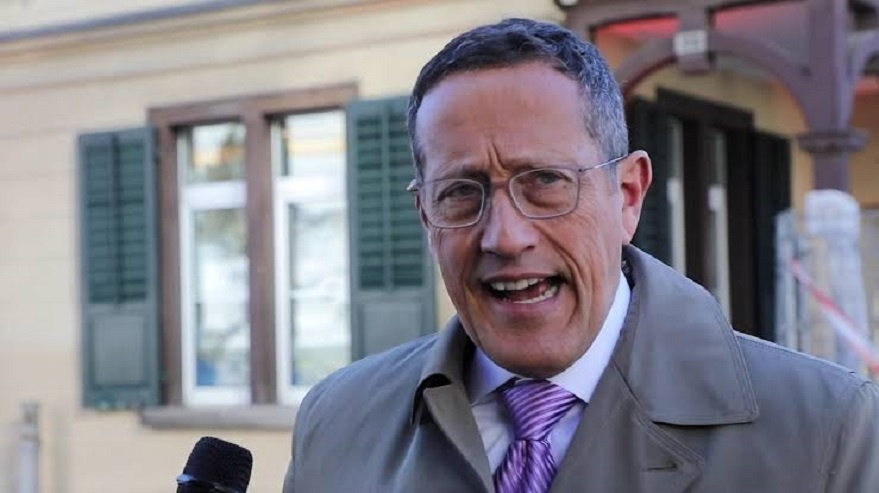
 Feature/OPED6 years ago
Feature/OPED6 years agoDavos was Different this year
-
Travel/Tourism9 years ago
Lagos Seals Western Lodge Hotel In Ikorodu
-

 Showbiz3 years ago
Showbiz3 years agoEstranged Lover Releases Videos of Empress Njamah Bathing
-

 Banking8 years ago
Banking8 years agoSort Codes of GTBank Branches in Nigeria
-

 Economy3 years ago
Economy3 years agoSubsidy Removal: CNG at N130 Per Litre Cheaper Than Petrol—IPMAN
-

 Banking3 years ago
Banking3 years agoFirst Bank Announces Planned Downtime
-

 Banking3 years ago
Banking3 years agoSort Codes of UBA Branches in Nigeria
-

 Sports3 years ago
Sports3 years agoHighest Paid Nigerian Footballer – How Much Do Nigerian Footballers Earn



